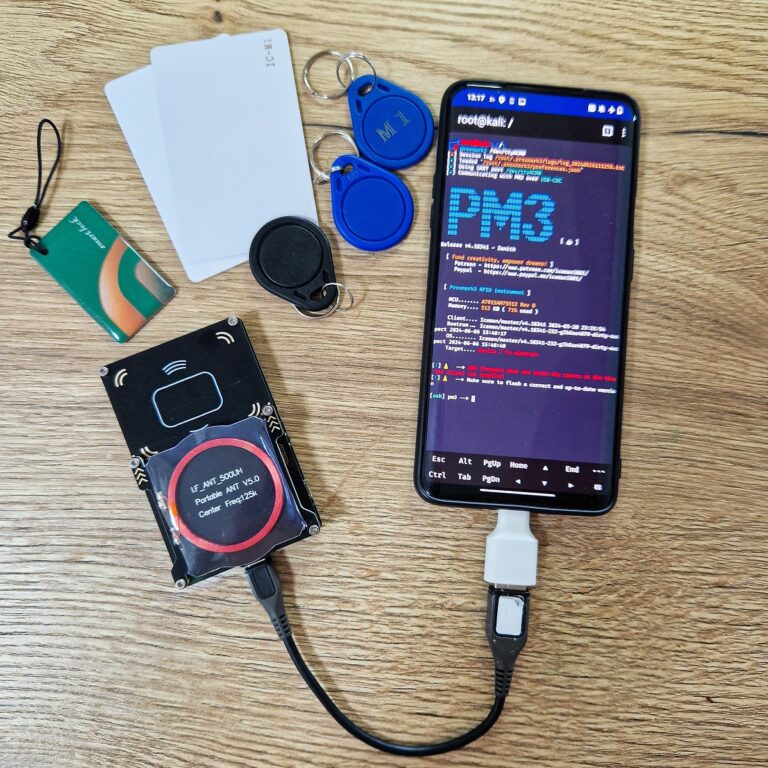
![]()
Access cards – those little plastic rectangles that grant us entry to buildings, parking lots, and secure areas. But what if I told you that these cards can be cloned, and even emulated? Enter the Proxmark3, a powerful tool that opens doors (literally) to the world of RFID hacking.
I the video below I demonstrated how threat actors can easily copy and emulate UID of Mifare classic 1K access card to unlock a door.
The Proxmark3 is the Swiss Army knife of RFID hacking. It is designed to handle both low frequency (125 kHz-134 kHz) and high frequency (13.56 MHz) proximity cards to read, write and emulate their data. Whether you’re a security researcher, penetration tester, or just a curious tech enthusiast, this device can reveal the secrets of access cards.
Cloning Access Cards
- What is Cloning?
- Cloning an access card means creating an identical copy of the original card. Once you have the clone, you can access the same doors and areas as the original cardholder.
- How Proxmark3 Does It:
- The Proxmark3 sniffs the communication between an access card and the reader. It captures the card’s data, including its unique ID (UID) and encryption keys.
- With this data, the Proxmark3 can create a clone by emulating the card. It sends the same signals to the reader, fooling it into thinking the clone is the genuine card.
Emulating Access Cards
- What is Emulation?
- Emulation goes beyond cloning. Instead of copying an existing card, the Proxmark3 becomes the card itself. It generates the same signals as the original card, granting access without needing the physical card.
- How Proxmark3 Does It:
- The Proxmark3 captures the card’s data (as in cloning).
- It then simulates the card’s behavior by replaying the captured data. The reader thinks it’s communicating with the actual card.
The Proxmark3 isn’t just a tethered device – it can operate in standalone mode, disconnected from a computer. Here’s how it works:
- What is Standalone Mode?
- In standalone mode, the Proxmark3 functions independently, without relying on a connected computer.
- It has its own microcontroller, memory, but needs external battery power.
- Use Cases for Standalone Mode:
- Field Work: Imagine you’re on-site, testing access control systems. The Proxmark3 in standalone mode allows you to capture data, clone cards, and emulate without lugging around a laptop.
- Physical Security Audits: Use it to assess the security of a facility without needing a computer nearby.
- Research and Development: Developers can experiment with custom firmware and features.
While the Proxmark3 is a powerful tool for security researchers and ethical hackers, it can also be misused. Here’s how to protect yourself:
- Use Secure Cards:
- Opt for cards with strong security features. Avoid cards with known vulnerabilities or default keys.
- Change Default Keys:
- If your card allows it, change the default keys. Custom keys enhance security.
- Monitor Access Logs:
- Regularly check access logs for unusual activity. Investigate unauthorized entries promptly.
- Physical Security:
- Keep your access card secure. Store it in a protective sleeve to prevent unauthorized scanning.
The Proxmark3 is a double-edged sword – it can expose vulnerabilities or be misused for illicit purposes. As security-conscious individuals, let’s use it responsibly. Understand how it works, protect your cards, and explore the fascinating world of RFID hacking.
